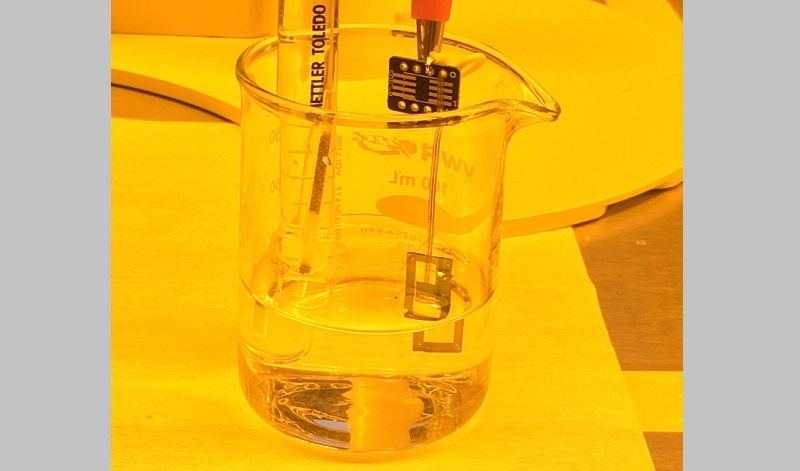A Protocol to Characterize pH Sensing Materials and Systems
by Mohamed Ghoneim, Atieh Sadraei, and Canan Dagdeviren
Although significant progress is made in identifying pH sensing materials and device configurations, a standard protocol for benchmarking performance of next-generation pH devices is still lacking. In particular, key properties of characterization systems, such as inherent component contributions, time plots for extended-gate field-effect transistor (EGFET) measurements, and the input resistance (Rin), often go unreported in studies of pH sensing systems. These properties strongly influence the characterization system and can lead to mistaken attribution of properties to the device. In this paper, a series of essential characterization tests and parameters are reported to evaluate pH systems, such as the zinc oxide (ZnO) EGFET, in a standardized protocol. This EGFET ZnO sensor has a sensitivity of −58.1 mV pH−1, drift range from 2.5 to 14.2 μA h−1, and response time of 136 s. By using a ZnO sensing electrode, it is demonstrated that i) intrinsic contributions of reference electrode and commercial transistor (for EGFET) are not negligible; ii) time plots for EGFET configuration and defining a critical point at the onset of drift are essential for accurate sensitivity, response time, and drift reporting; and iii) the results of the pH sensing system are strongly dependent on the input resistance of the used characterization instruments.
Contributors: Mohamed Ghoneim, Atieh Sadraei, Canan Dagdeviren





